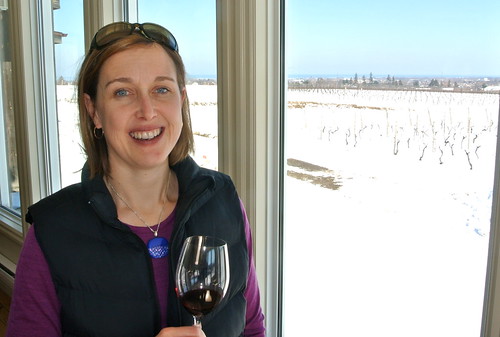
It’s a question I ask winemaker Emma Garner, above, pretty much every time I see her. When will Niagara Riesling ever get the recognition it most certainly deserves?
Years have passed since I first broached it with the Thirty Bench winemaker; and still this terroir-driven varietal plays second, third and even fourth fiddle to some of its more precious brothers and sisters.
Practically every winery in Niagara makes Riesling in some fashion. Nearly 19% of all vineyard acreage in Niagara is planted to Riesling, second only to Chardonnay for most planted grape.
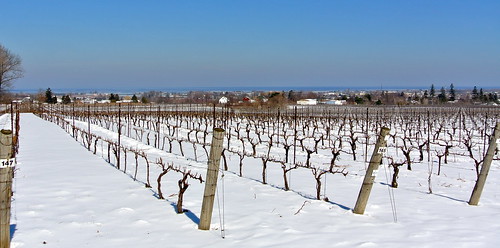
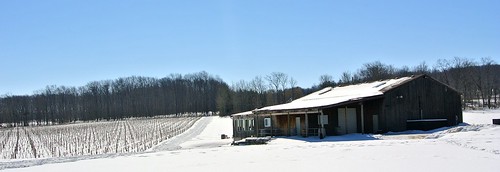
I would argue, pound for pound, there is no more perfect grape for Niagara’s cool climate and no more perfect grape to showcase the sub-appellations of the region. Of all the grapes Niagara grows and all the styles that are made across the board, Riesling is the most trusted to deliver a solid wine from winery to winery at the broadest range of prices.
I have had delicious Rieslings for $12 and complex, stunning world-class Rieslings in Niagara for $35 and beyond.
It’s a transformative grape here; a reflection of both the soil in which it is grown and the microclimate that shapes its personality. It needs no trickery in the winery to show its beauty, it simply needs wise picking decisions and the hand of the winemaker to gently guide it to bottle.
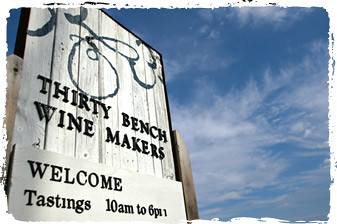 Riesling is the perfect vehicle to show off the terroir of the sub-appellations in Niagara and even the vineyards and single blocks within those vineyards.
Riesling is the perfect vehicle to show off the terroir of the sub-appellations in Niagara and even the vineyards and single blocks within those vineyards.
But it still is not universally embraced and celebrated like, say, Chardonnay with its splashy annual i4c event that brings Chardonnay producers from around the world to Niagara to celebrate that grape.
Icewine, too, gets its own annual party and there is a growing movement to bring Gamay into the limelight, even though that grape is grown and made into wine by only a very few wineries in Niagara.
Even Pinot Noir has an annual consumer-driven event with The Pinot Affair.
Riesling? Our greatest and purest express of Niagara? Nada. It has no champion, no crusader, no growing groundswell of support either in Niagara or beyond.
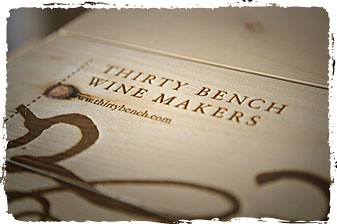 Yes, Brock hosts the Riesling Experience, an international celebration of style, structure and purity, held every two years, with the next one in 2015. But it is an event that is geared to the industry and not the consumer. While it is a wonderful and educational event, it preaches to the converted.
Yes, Brock hosts the Riesling Experience, an international celebration of style, structure and purity, held every two years, with the next one in 2015. But it is an event that is geared to the industry and not the consumer. While it is a wonderful and educational event, it preaches to the converted.
For Garner, she doesn’t understand why a Niagara Riesling festival or Summer of Riesling-style event can’t gain traction. She would love to see a concerted effort directed at this grape.
“For me, my message is the terroir message, and Riesling is the one variety that speaks to it most,” she says.
And because Niagara Riesling works so well with myriad foods, there could (and should) be buy-in with Ontario restaurants and sommeliers.
One Toronto restaurant, Ascari Enoteca (1111 Queen St. E), is experimenting with a Riesling month in June and is following that up with a Chardonnay Month in July, which coincides with i4c in Niagara.
Sommelier Jasmine Lee Black says three Rieslings will replace three of her regular pours at the restaurant in June. Three Niagara wineries are being featured during the month including Thirty Bench, Cave Spring and 13th Street.
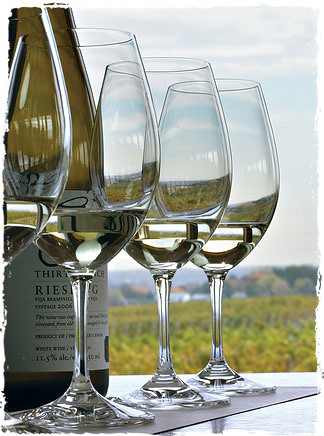 Garner and her Rieslings will be featured on June 5 during an “Up Close and Personal” evening at the restaurant. Ascari’s version of a winemakers dinner, says Black, is much different than others. There are no tickets and no commitment required from guests. Everyone who makes a reservation for that night will be told about the event but do not have to participate.
Garner and her Rieslings will be featured on June 5 during an “Up Close and Personal” evening at the restaurant. Ascari’s version of a winemakers dinner, says Black, is much different than others. There are no tickets and no commitment required from guests. Everyone who makes a reservation for that night will be told about the event but do not have to participate.
“That being said — most of our reservations will be from people that are coming specifically to taste the wines and meet Emma,” said Black.
Garner will be at the event enjoying dinner and sharing her wines with guests in a relaxed forum designed to showcase her Rieslings and how they pair so well with food.
It’s a small step in the right direction for this most wonderful variety. We need a champion in Niagara, a Riesling warrior to step up to the plate and show consumers why Riesling is the perfect vehicle to show off the terroir of the sub-appellations in Niagara and even the vineyards and single blocks within those vineyards.
Niagara has the dirt, the climate and the winemaker’s personal style to offer consumers something special, something to talk about. So, let’s get talking.
•••
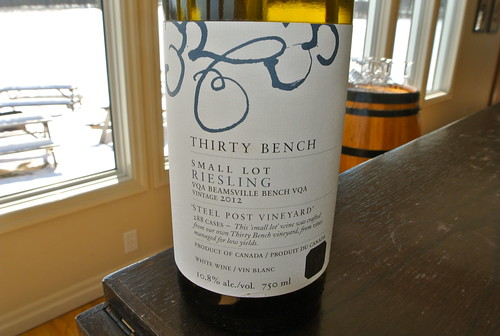
The single-vineyard Rieslings from Thirty Bench are some of the most fascinating wines in Niagara.
To taste the Steel Post, Wood Post and Triangle Vineyard wines, from 33-year-old vines, and planted rather arbitrarily back in the day, is an exercise in terroir-driven Rieslings played out vintage after vintage.
In the vineyard, there is little clue as to why this trilogy of wines taste profoundly different from one another. They are made exactly the same way and picked at the same time yet all express different flavours. About the only difference is the varying water retention.
I tasted the 2012 Rieslings with Garner recently and the newly released reds from the Thirty Bench portfolio. The 2012 Rieslings were first shown last year but are being re-released this June with a bit of bottle age, which Garner prefers.
Here’s what we tasted on a chilly and snow-covered spring day at the winery.
Thirty Bench Winemakers Riesling 2012 ($19, winery now, 89 points) — The Winemakers Riesling is a blend from all three of the Small Lot wines. The nose shows bright and fresh notes of grapefruit, peach, apple and mineral notes. It’s medium dry on the palate with playful sweet-tart citrus, grapefruit and tangerine all bolstered by refreshing acidity.
The Small Lot Collection
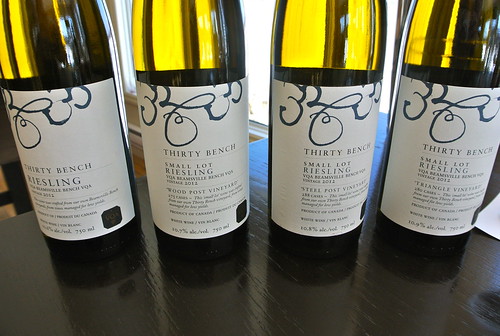
In 2005, Thirty Bench began making its now iconic Small Lot wines from three blocks in the Beamsville Bench vineyard on the property located on Mountainview Road.
Each block is picked separately with young and old vines (the oldest are 33 years old) from each block picked and fermented separately. The grapes are whole bunch pressed and ferments are stopped with some residual sugar.
Garner is looking for the best expression from each block for the Small Lot collection while the rest goes into the Winemakers Riesling.
All trial tastings are conducted blind, but Garner said the older vines generally emerge as the Small Lot wines.
If Garner feels the vintage can’t deliver a Small Lot wine, she doesn’t force it. Such was the case in 2013. No Wood Post was made in that vintage and all that fruit was declassified into the Winemakers Riesling.
Also different in 2013 is the style of the Triangle Riesling. About 1,000 litres was wild fermented in neutral oak puncheons with 600 litres fermented in stainless steel. The wine sat on the lees for four months.
Thirty Bench Small Lot Wood Post Vineyard Riesling 2012 ($30, June release, 91 points) — Nestled next to the winery, the Wood Post Vineyard provides a gorgeous view out the sun-filled tasting room windows. Named after the posts, this nine-acre vineyard is the youngest of estate’s Riesling vines, planted in 1984. The nose shows brilliant lime, slate mineral, green apple, jasmine and an enticing earthiness. It’s bright yet structured on the palate with persistent citrus notes and ginger spice that lingers on the palate. It is the wild child of the three single-block wines, “you just never know where it’s going to go,” says Garner.
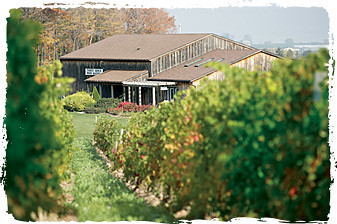 Thirty Bench Small Lot Steel Post Vineyard Riesling 2012 ($30, June release, 93 points) — It is always the Triangle that gets the most attention from consumers but, for me, I gravitate to the Steel Post. It has the aging potential that I desire in Riesling and is always tight and austere in the beginning before it begins to reveal its true beauty. It is situated in the middle of the 22-acre Riesling, planted in 1983. It is pretty yet restrained on the nose with lime-apple fruits emerging and subtle pineapple, minerals and a funky-earthy note in the background. It appears drier on the palate than the other two Small Lot wines, even though the RS is similar (in the 14-15 g/l range). It has depth and firm structure on the palate and slowly reveals peach, apricot and lemon-drop notes that linger on the palate. The minerals will come with time when the layers begin to unfold. “Steel always has that precision,” says Garner. “It’s like an arrow, tightly wound.”
Thirty Bench Small Lot Steel Post Vineyard Riesling 2012 ($30, June release, 93 points) — It is always the Triangle that gets the most attention from consumers but, for me, I gravitate to the Steel Post. It has the aging potential that I desire in Riesling and is always tight and austere in the beginning before it begins to reveal its true beauty. It is situated in the middle of the 22-acre Riesling, planted in 1983. It is pretty yet restrained on the nose with lime-apple fruits emerging and subtle pineapple, minerals and a funky-earthy note in the background. It appears drier on the palate than the other two Small Lot wines, even though the RS is similar (in the 14-15 g/l range). It has depth and firm structure on the palate and slowly reveals peach, apricot and lemon-drop notes that linger on the palate. The minerals will come with time when the layers begin to unfold. “Steel always has that precision,” says Garner. “It’s like an arrow, tightly wound.”
Thirty Bench Small Lot Triangle Vineyard Riesling 2012 ($30, June release, 92 points) — This vineyard is located in the east corner of the estate (it is, in fact, planted in a triangle). Planted in 1981, the nine-acre vineyard has a lower elevation than the Wood Post and Steel Post Vineyards and is divided by a small wooded area and tiny creek. Garner calls this a bigger, fleshier Riesling: “The crowd pleaser, seductive,” she says. It’s definitely the first of the trio to show itself fully. And in a warm vintage like 2012, it is a voluptuous beauty with a nose of citrus, juicy peach, tangerine, ginger, lilac, minerals, and a lovely lanolin note. It’s fleshy on the palate, rich and textured with defined fruits in combination with minerals and spice. It’s just a wonderful and pristine Riesling that will deliver immediate pleasure.
The Reds

While Thirty Bench has built its reputation on its Rieslings, Garner does make some pretty good reds from the estate vineyards. At the top level, the Small Lot reds can stand alongside the top wines being made on the Beamsville Bench.
The 2011s are just being released now but no Cabernet Sauvignon or the top Benchmark Red were made in this cooler vintage, so both the Winemakers Red and Small Lot wines benefited from the declassification of those grapes.
Thirty Bench Winemakers Red 2011 ($24, winery now, 88 points) — A blend of 48% Cab Sauv, 42% Merlot and 10% Cab Franc, it has a savoury, spicy nose with blackberry, cherry and herb notes. It has firm tannins, bramble, blackberry, licorice and spice on the palate.
Thirty Bench Small Lot Merlot 2011 ($40, winery now, 89 points) — A pretty nose with plum and cherry fruit to go with spiced vanilla. It shows complexity in the mouth with darker fruits, savoury spices and structured tannins.

Thirty Bench Small Lot Cabernet Franc 2011 ($40, winery now, 91 points) — Tight but highly intriguing on the nose with a basket of red fruits, licorice, spice and herbs. It’s just starting to open up on the palate and, surprisingly, doesn’t show the lean-green notes you’d expect from the vintage. The ripe red fruits are joined by lovely spices and integrated herbs in a structured style that has good aging potential.
Note: I also had a preview of the Thirty Bench Winemakers Red 2010 (May release, $24) and it’s a beauty with ripe fruit, firm structure and delicious spice all in balance. We also opened up a Small Lot Merlot from another cool vintage, 2008. Here’s what I said about it when it was released:
“The nose is all about mocha-blackberry-cherry, vanilla, cassis preserve and cigar-box cedar. On the palate the rich fruits meld nicely with the charred oak, roasted vanilla bean and plush tannins.” Now fully mature, this Merlot has developed beautifully with integrated red fruits, spice and cigar tobacco notes. A real treat to revisit.






Comment here